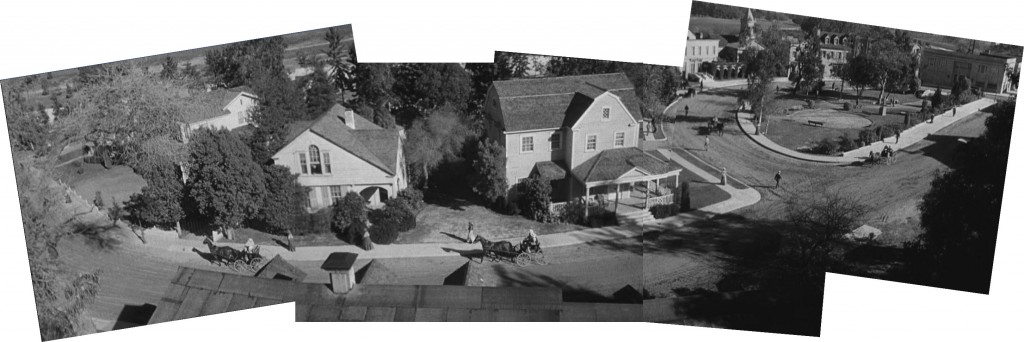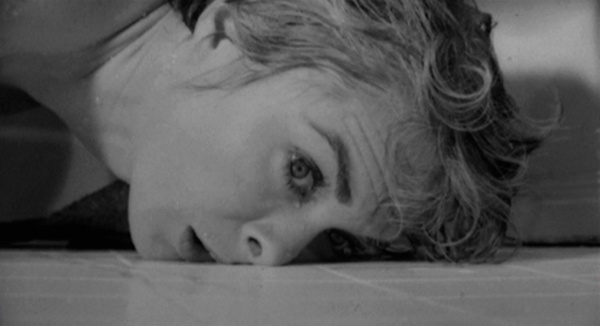 This article first appeared in the online journal Refractory – direct link here. In the version here I have added clickable images – you can click on any image to go through to flickr where you can see it in a larger format.
This article first appeared in the online journal Refractory – direct link here. In the version here I have added clickable images – you can click on any image to go through to flickr where you can see it in a larger format.
The origins of the modern suburb can be traced back to the mid 19th Century, with streetcars and the railroad spurring the development of commuter suburbs, and industrialisation increasing the urge to escape the pollution and overcrowding of cities and also spurring the creation of company towns for workers.1 The appeal of the suburban ideal is not hard to understand, with urban hinterlands long having been recognised as harbouring the potential to provide the best of urban and rural lifestyles. Ebenezer Howard’s 1898 conception of “three magnets” is a classic expression of this urge, with “town” and “country” each offering a dubious mixed bag of blessings and faults, but “town-country” giving an irresistible blend of both:
Beauty of Nature, Social Opportunity. Fields and Parks of Easy Access. Low Rents, High Wages. Low Rates, Plenty to Do. Low Prices, No Sweating. Field for Enterprise, Flow of Capital. Pure Air and Water, Good Drainage. Bright Homes & Gardens, No Smoke, No Slums. Freedom, Co-operation.2
Howard conceived of stand-alone master-planned garden cities, but the edges of existing cities represented a more readily accessible site to pursue the balance of the space and beauty of the country and the opportunities and society of the city. Yet the mass adoption of the suburbs as a dominant mode for middle-class residential living – rather than as a haven for the extremely wealthy – can be traced to the period immediately after World War II, to the point where the popular conception of suburbia is inextricably linked to the 1950s: the expression “sitcom suburbs” raises an instant image of a particular type of lifestyle, most stereotypically embodied in 1950s sitcoms such as Leave it to Beaver (Gomalco Prodcutions and Kayro-Vue Productions, 1957-1963), The Adventures of Ozzie and Harriet (Stage Five Productions, 1952-1966), and Father Knows Best (CBS, NBC and ABC, 1954-1960).3 At the conclusion of World War II, a number of factors combined to lead to the mass expansion of suburbs in the United States and Australia (and to a lesser extent in Europe and the United Kingdom). Without war and depression to stifle growth, automobiles could realise their latent potential to reshape the built landscape;4 mass production reduced construction costs, with home construction shifting sharply away from owner-builders to developer-builders;5 and affordability was artificially spurred by direct and indirect government subsidies for suburban development, including highway construction and direct financial assistance such as the United States’ Serviceman’s Readjustment Act of 1944.6 With suburbia more accessible than ever before, populations eager to realise the hard-won fruits of victory (and in the midst of a post-war baby boom) flocked to suburban communities. Between 1950 and 1970, central cities in the United States grew by 10 million people, but their suburbs added 85 million.7 The paradox created by this mass adoption of the suburban lifestyle was quickly recognised, and has been much discussed since: the scale of the suburban roll-out meant that the original “best-of-both worlds” ideal was quickly extinguished. Road networks became increasingly extravagant even as they became ever-more congested; the dispersal of uses meant the urban environment became vast and centreless; the mass-production of houses led to dull and lifeless street environments; and the actual urban / rural interface continually leap-frogged each new ring of development, stripping communities of the access to open landscape they had previously enjoyed. Such problems were quickly apparent: as urban historian Lewis Mumford noted in 1961, “[a]s soon as the suburban pattern became universal, the virtues it at first had boasted began to disappear.”8 Yet despite this prompt identification of the perils of suburban development, the continued popularity of the model attests to the powerful pull of the suburban dream. If anything, disappointment in actual suburbs only strengthens the urge to find that elusive community that can approximate the imaginary ideal of community, spaciousness, and aesthetic appeal. These are essentially the qualities associated with the quintessential small town, to the point where the imagined virtues of suburb and small town are inextricably linked: suburbs are an attempt to mass-produce an affordable version of the perfect small community. It is therefore of interest to look at the ideal of the small town as depicted in Hollywood films at the dawn of the suburban explosion. These have much to tell us about the community ideals that drove post-World War II suburban expansion.
